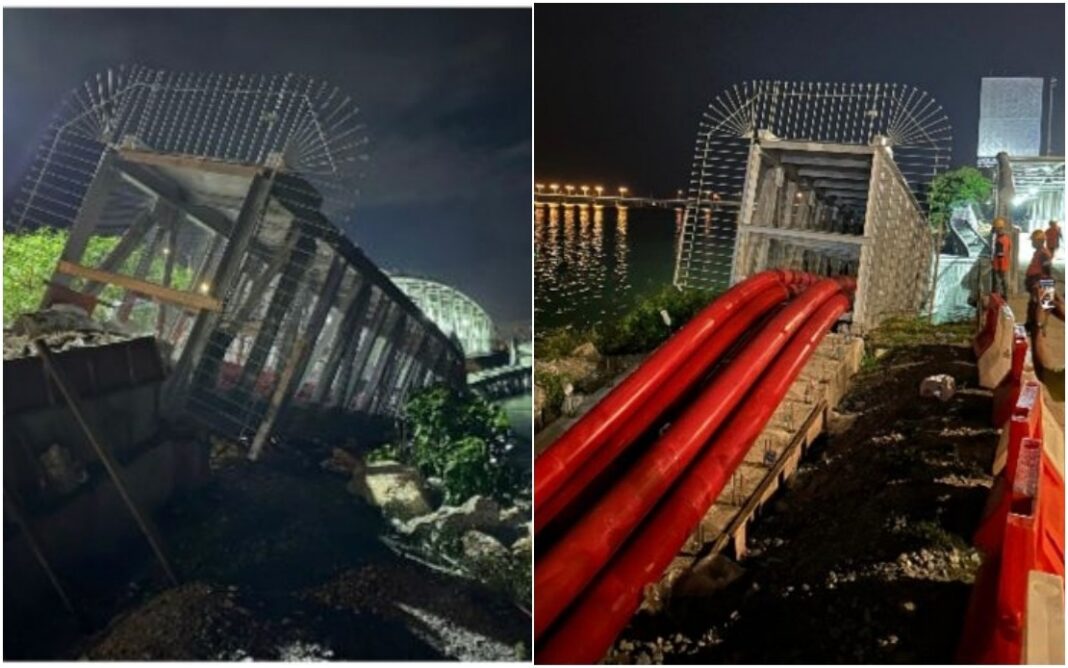The recent collapse of the Tenaga Nasional Berhad (TNB) cable bridge in Bayan Lepas has raised significant concerns about the structural integrity and safety of infrastructure. The incident occurred because the bridge was unable to sustain the weight of the 275kV cables it was designed to support.
According to Penang Infrastructure, Transport and Digital Committee chairman Zairil Khir Johari, the collapse happened at Cable Bridge number one, which is part of a project heading towards Intel. Johari stated that TNB has taken immediate action by removing the cables, reopening the cable installation, and adding piling in the centre to strengthen the bridge.
The bridge’s failure to handle the load has prompted an immediate investigation. Engineers and safety officials are assessing the structure to determine the exact cause of the failure. It is clear that the bridge was not able to support the weight of the cables, highlighting a critical issue with its structural capacity.
In response to the collapse, TNB officials have announced plans to reinforce the cable bridge. These plans include conducting a thorough structural assessment, implementing immediate reinforcement measures, establishing a regular maintenance schedule, and engaging with safety experts for ongoing evaluations. The goal is to restore confidence in the safety of the bridge and prevent similar incidents in the future.
The local community has expressed concern over the safety of public infrastructure following the collapse. Residents are calling for increased transparency from authorities regarding safety measures. To address these concerns, officials are planning community meetings to discuss safety protocols and updates on the bridge’s status. They aim to reassure the public and ensure that all necessary precautions are taken.
Several factors can contribute to the failure of such structures, including material fatigue over time, environmental factors such as weather, inadequate load assessments during design, and neglect in maintenance and repairs. Regular inspections are crucial to identify potential weaknesses and prevent failures.
The incident underscores the importance of redundancy in bridge design. A non-redundant bridge system, like the one that collapsed, is more susceptible to failure because it lacks alternative load paths. Proper maintenance and regular inspections are essential to prevent deterioration and reduce the potential for failures.
Fortunately, no injuries were reported in the incident, but the collapse has significant implications for infrastructure safety. The public has been advised to stay clear of the area while assessments are conducted, and authorities are working to ensure that similar incidents do not occur in the future.


